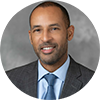Download PDF

In 1903, when the Academy was known as the American Academy of Ophthalmology and Otolaryngology, its mission was “to encourage the study and practice of medicine and surgery in their relations to the eye, nose and throat.” Following the establishment of the American Academy of Ophthalmology as an independent organization in 1979, the mission evolved to become “to advance the lifelong learning and professional interests of ophthalmologists to ensure that the public can obtain the best possible eye care.”
In 2015 the Academy undertook the task of revising this mission statement. A key goal was to clearly articulate the fundamental principle that guides the professional ethos of the Academy’s individual physician members—our duty to patients—while capturing the breadth of its work. This effort resulted in the mission statement that we embrace today: “to protect sight and empower lives by serving as an advocate for patients and the public, leading ophthalmic education, and advancing the profession of ophthalmology.”
This statement has served us well: it places the patient at the core of our mission as physicians, and it acknowledges that by training and responsibility we care for not just eyes but lives. It also highlights our critically important activities as the voice of the profession: education and advocacy. It is fair to ask however whether this truly captures the scope of the modern Academy and reflects all that we do collectively as a profession through the Academy.
A fairly straightforward way to address this question is quite simply to examine what we do today, where we invest our organizational resources, and the degree to which these activities are valued by our members. Education and advocacy obviously score extremely well when assessed in this light. But today’s Academy does far more than simply disseminate through its educational materials information to enhance care; increasingly over the years the Academy has taken the lead in convening experts across our community to develop evidence-based recommendations and guidance for care, and it has supported the research that informs those standards.
This work is reflected in our extensive Preferred Practice Pattern clinical guidelines, our Ophthalmic Technology Assessments, and our various clinical statements, all of which are intended to enhance quality of care. It is this commitment to quality of care that inspired the Academy’s development of the IRIS Registry, which has served to facilitate quality assessment at the practice level through MIPS reporting and has also established an invaluable research tool for improving care and outcomes.
The Academy has also become the leader in offering the highest quality clinically relevant research in our field as host of its most influential peer-reviewed scientific journals. Ophthalmology as the flagship publication attracts the most broadly relevant clinical science as is reflected in its most current Impact Factor of 13.7—well ahead of even such distinguished journals as the Proceedings of the National Academy of Sciences of the United States of America—while Ophthalmology Glaucoma and Ophthalmology Retina also lead in Impact Factor within their disciplines.
This commitment to the important research that guides the development of evidence-based quality of care standards inspired the Academy’s Board of Trustees to revisit our current mission statement, not for a major overhaul but for acknowledgement of this critical aspect of our work. After thoughtful deliberation and with care to preserve the vital elements of the current statement, the Board of Trustees endorsed an expansion of our mission statement, which now reads: “The mission of the American Academy of Ophthalmology is to protect sight and empower lives by serving as an advocate for patients and the public, leading ophthalmic education, supporting research, and advancing the profession of ophthalmology.”
These are indeed lofty goals and what we do as clinicians is increasingly challenging, but it is inspiring to know that collectively as a profession we contribute in so many different ways to live this mission with purpose every day by protecting sight and empowering lives.